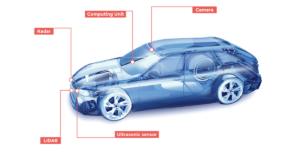University of North Carolina
The AAA Foundation for Traffic Safety and the University of North Carolina have conducted a groundbreaking study revealing that the increased adoption and utilization of Advanced Driver Assistance Systems (ADAS) could lead to the prevention of more than 8,000 fatalities annually.
The research indicates that between 2021 and 2050, the integration of ADAS technology in vehicles has the potential to avert up to 250,000 fatalities, 14 million injuries, and 37 million crashes.

ADAS technology includes a variety of features that can help drivers avoid crashes, such as:
- Forward collision warning (FCW): This system alerts the driver if they are getting too close to the car in front of them.
- Automatic emergency braking (AEB): This system can automatically apply the brakes if the driver does not react to an FCW warning.
- Lane departure warning (LDW): This system alerts the driver if they are drifting out of their lane.
- Lane keep assist (LKA): This system can automatically steer the car back into their lane if they start to drift.
- Blind-spot monitoring (BSM): This system alerts the driver if there is a car in their blind spot.
- Rear cross traffic alert (RCTA): This system alerts the driver if there is a car crossing behind them when they are backing up.
Traffic Safety
By analyzing vehicular accidents in the USA from 2017 to 2019, a period predating widespread ADAS availability, AAA estimated the likelihood of ADAS systems preventing crashes, assuming a consistent crash rate. ADAS encompasses diverse safety features, such as task automation, blind spot monitoring, emergency automatic braking, adaptive cruise control, and lane-keeping assistance, among others.
Advanced Driver Assistance Systems
While AAA’s study acknowledges that current ADAS technologies aren’t infallible, the forthcoming widespread integration of these systems holds significant promise in enabling drivers to avoid collisions and mishaps. As technology continues to advance, the reliability and efficacy of ADAS features are expected to improve. This anticipates a substantial enhancement in road safety.
Evolution
The study’s projections, while estimates subject to numerous variables including technology progression, driver conduct, and adoption rates, underscore the positive trajectory toward heightened road safety through ADAS integration.
Furthermore, ADAS technologies serve as a stepping stone toward full autonomous driving solutions, gathering invaluable experiential data for the development of advanced self-driving technologies in the future.
Conclusion
The collaborative study conducted by the AAA Foundation for Traffic Safety and the University of North Carolina underscores the immense potential of Advanced Driver Assistance Systems (ADAS) in revolutionizing road safety. The research findings project a remarkable outcome: the potential to save over 8,000 lives annually through increased ADAS adoption. The data suggests that ADAS integration between 2021 and 2050 could prevent a staggering 250,000 fatalities, 14 million injuries, and 37 million crashes.
Projections
The study’s methodology, rooted in analyzing pre-ADAS crash data from 2017 to 2019, forms a strong foundation for these projections. While acknowledging the current imperfections of ADAS technology, the study emphasizes the imminent promise of enhanced road safety as ADAS systems continue to evolve and proliferate.
Refinement
As technology advances, we can anticipate the refinement of ADAS features, leading to heightened reliability and efficacy. The trajectory is clear: the integration of ADAS has the potential to significantly reduce accidents and fatalities, fostering safer roadways for all. While the projected figures are subject to variables, the overall trend aligns with an optimistic future of improved road safety.
Catalyst
Moreover, beyond the immediate benefits, ADAS technologies serve as a critical bridge toward fully autonomous vehicles, laying the groundwork for future advancements in self-driving technology. This study serves as a catalyst, motivating stakeholders to invest in ADAS research and development, ultimately contributing to a safer and more efficient transportation landscape.





































